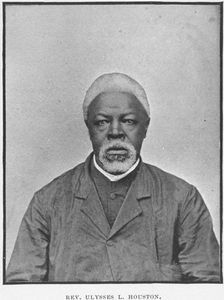The post-war exodus of former slaves from the South to the North is already in progress. They follow paths trod by hundreds of thousands who fled to freedom during the war.
In Indiana, Evansville, just across the Ohio River from Kentucky, is a top destination for freedmen from the South. Today former slaves who have settled in Evansville form a new church, the aptly-named Liberty Baptist Church, housed “in a small brick building at Chestnut and Canal streets.” Reflecting the transitory nature of black and white relations at this time, the congregation temporarily employes a white man who is an advocate for Evansville’s black citizens. But within a year, a black pastor, Green McFarland, assumes the pastorate, leading the church into a period of rapid growth.
Soon, the area around the church becomes known as “Baptist Town.” The church is the oldest extant Baptist congregation in Evansville.
Freedmen who remain in the South are trying to adjust to the realities of a life of freedom. Along the coasts of South Carolina and Georgia, the Federal government continues turning confiscated plantation lands over to former slaves.
Ulysses S. Houston, pastor of Bryan Street (First Bryan) Baptist Church in Savannah, recently helped some 1,000 black families relocate to nearby Skidaway Island, one of Georgia’s Sea Islands. All told, there are now some 40,000 ex-slaves settled on about 400,000 acres.
There is, however, ambiguity concerning the land which the freedmen are now working. Whether the land will be available long-term or not is uncertain.
Sources: Beth L. Savage, editor, African American Historic Places, p. 221 (link); “Liberty Colored Baptist Church,” in Joseph Peter Elliott, A History of Evansville and Vanderburgh County, Indiana: A Complete and …, p. 268 (link); “A Foretaste of Freedom,” Public Broadcasting Corporation (link)



